 King: Alfred the Great ( 849-901) – “I desire to leave to the men that come after me a remembrance of me in good works.”
King: Alfred the Great ( 849-901) – “I desire to leave to the men that come after me a remembrance of me in good works.”
Most of us shuffle off this mortal coil, having carefully set down what we leave where, and to whom. Some depart with nary a word put to paper, leaving them intestate, and their relatives in-a-snit. Wills serve a useful purpose in making sure that what we couldn’t take with us, goes to who we want it to. Some of course, have more to leave than others.
Benjamin Franklin distributed a considerable amount of the most common items: property and cash, much of which went to charitable causes. Along with the bonds of several people, his beloved books and telescope, he left some more interesting bequests. To his son in law, the watch chain of the 13 States. To his daughter, “The king of France’s picture, set with four hundred and eight diamonds, I give to my daughter, Sarah Bache, requesting, however, that she would not form any of those diamonds into ornaments either for herself or daughters, and thereby introduce or countenance the expensive, vain, and useless fashion of wearing jewels in this country; and those immediately connected with the picture may be preserved with the same.” And most movingly, this gift to George Washington: ” My fine crab-tree walking stick, with a gold head curiously wrought in the form of the cap of liberty, I give to my friend, and the friend of mankind, General Washington. If it were a Sceptre, he has merited it”
Read the rest of this entry »
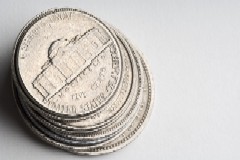 The United Nations World Heritage List includes Monticello in its rankings along with such international sites like the Great Wall of China and the Tower of London. In fact, it is the only American residence making the prestigious list. The following article offers a wide array of facts, trivia and information about Thomas Jefferson and his beloved home Monticello.
The United Nations World Heritage List includes Monticello in its rankings along with such international sites like the Great Wall of China and the Tower of London. In fact, it is the only American residence making the prestigious list. The following article offers a wide array of facts, trivia and information about Thomas Jefferson and his beloved home Monticello. The I Ching, also called the Book of Changes, originated during an important time in Chinese history – the overthrow of the Shang dynasty by the Chou dynasty, which also collapsed. It was a time of much social unrest and confusion. The wise men and women of the time made up stories that they fashioned into an oracle to help the people deal with all the changes.
The I Ching, also called the Book of Changes, originated during an important time in Chinese history – the overthrow of the Shang dynasty by the Chou dynasty, which also collapsed. It was a time of much social unrest and confusion. The wise men and women of the time made up stories that they fashioned into an oracle to help the people deal with all the changes.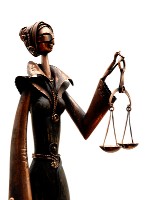 US Representative Daniel E. Sickles is the first defendant known to have won an acquittal of a first degree murder charge with a plea of not guilty by reason of temporary insanity. In 1859 he shot and killed Philip Barton Key, the son of composer Francis Scott Key, in broad daylight in front of many witnesses. Key was unarmed. It was widely known at the time that Key was carrying on an affair with Sickles’ wife. Screaming that Key must die for having “dishonored” his house, Sickles fired two bullets into him. The jury sympathized with Sickles. Key had been his close friend. When it appeared that Key was on the verge of losing his job as US Attorney for the District of Columbia, Sickles used his influence to save Key’s job. Although there was no doubt that Sickles killed Key, it was felt by many that Key brought about his own demise. The culture of the time saw Sickle as a man wronged who stood up for his honor. The trial lasted twenty days. The verdict was returned after an hour of deliberation “ œnot guilty by reason of temporary insanity.
US Representative Daniel E. Sickles is the first defendant known to have won an acquittal of a first degree murder charge with a plea of not guilty by reason of temporary insanity. In 1859 he shot and killed Philip Barton Key, the son of composer Francis Scott Key, in broad daylight in front of many witnesses. Key was unarmed. It was widely known at the time that Key was carrying on an affair with Sickles’ wife. Screaming that Key must die for having “dishonored” his house, Sickles fired two bullets into him. The jury sympathized with Sickles. Key had been his close friend. When it appeared that Key was on the verge of losing his job as US Attorney for the District of Columbia, Sickles used his influence to save Key’s job. Although there was no doubt that Sickles killed Key, it was felt by many that Key brought about his own demise. The culture of the time saw Sickle as a man wronged who stood up for his honor. The trial lasted twenty days. The verdict was returned after an hour of deliberation “ œnot guilty by reason of temporary insanity. Chocolate could well be called the food of gods and kings. Early Mayan writings record pictures of gods with cacao pods and bowls of cacao beans. Elite members of upper Mayan society had ornately carved vessels depicting these same cacao pods. Chocolate drinks were important to Mayan ceremony as well and used to seal contracts and marriages. The Aztecs borrowed Mayan chocolate tradition and also celebrated the primitive confectionary.
Chocolate could well be called the food of gods and kings. Early Mayan writings record pictures of gods with cacao pods and bowls of cacao beans. Elite members of upper Mayan society had ornately carved vessels depicting these same cacao pods. Chocolate drinks were important to Mayan ceremony as well and used to seal contracts and marriages. The Aztecs borrowed Mayan chocolate tradition and also celebrated the primitive confectionary.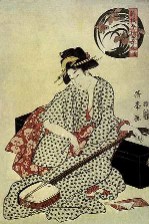 The world of the Japanese Geisha is mysterious as it is glamorous. Recent books like Arthur Golden’s Memoirs of a Geisha are returning this pleasure girl to a popularity she has not enjoyed since World War II. The following article chronicles the history of this illustrious group of women.
The world of the Japanese Geisha is mysterious as it is glamorous. Recent books like Arthur Golden’s Memoirs of a Geisha are returning this pleasure girl to a popularity she has not enjoyed since World War II. The following article chronicles the history of this illustrious group of women. Are women really the fairer sex? Here are some examples of women ‘behaving badly’.
Are women really the fairer sex? Here are some examples of women ‘behaving badly’. Nubia is the ancient name of the land directly south of Egypt. This ancient kingdom straddled the Nile River between the first and sixth cataracts where navigation has traditionally been a tricky affair at any time. By land, Nubia was surrounded by deserts. In ancient times Nubia was a literal goldmine for the Egyptians who at times dominated the land and at other periods were rivals of it. The following article shares many fascinating facts about the ancient land and peoples of Nubia as well as several aspects of archaeological significance.
Nubia is the ancient name of the land directly south of Egypt. This ancient kingdom straddled the Nile River between the first and sixth cataracts where navigation has traditionally been a tricky affair at any time. By land, Nubia was surrounded by deserts. In ancient times Nubia was a literal goldmine for the Egyptians who at times dominated the land and at other periods were rivals of it. The following article shares many fascinating facts about the ancient land and peoples of Nubia as well as several aspects of archaeological significance. From the wheel to the rocket and all the remarkable inventions in between, the following text lists some highlights from the world of inventions. Although not discussed chronologically, these facts are loosely organized by type.
From the wheel to the rocket and all the remarkable inventions in between, the following text lists some highlights from the world of inventions. Although not discussed chronologically, these facts are loosely organized by type.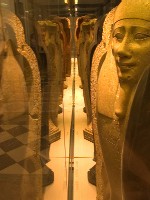 John Wilkes Booth
John Wilkes Booth King: Alfred the Great ( 849-901) – “I desire to leave to the men that come after me a remembrance of me in good works.”
King: Alfred the Great ( 849-901) – “I desire to leave to the men that come after me a remembrance of me in good works.” “Without lies humanity would perish of despair and boredom” – Anatole France
“Without lies humanity would perish of despair and boredom” – Anatole France Did you ever wonder why Henry VIII was forever pictured with a turkey leg in his hand? Or maybe why he was so grumpy, especially with his wives? All you need do is look at the menu of a medieval feast, to find out not only why he was so dyspeptic but why he was so distanced from his courtiers…because he became so broad of girth from food and dropsy, that he couldn’t belly up to the table.
Did you ever wonder why Henry VIII was forever pictured with a turkey leg in his hand? Or maybe why he was so grumpy, especially with his wives? All you need do is look at the menu of a medieval feast, to find out not only why he was so dyspeptic but why he was so distanced from his courtiers…because he became so broad of girth from food and dropsy, that he couldn’t belly up to the table.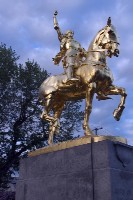 “Witch” was she- simple maiden or winsome witch? The young French girl, who began hearing voices at age 13 while living near Lorraine, France was given a daunting task: to save France and put Charles VII on the throne. It had more allure than milking the cows, but despite what she believed to be the words of God, Joan tarried until she was sixteen, before taking up men’s clothing as ordered, and asking Charles to put her in charge of his armies. For once, a man did what he was told, and in 1429, she routed Orleans at the head of the French soldiers.
“Witch” was she- simple maiden or winsome witch? The young French girl, who began hearing voices at age 13 while living near Lorraine, France was given a daunting task: to save France and put Charles VII on the throne. It had more allure than milking the cows, but despite what she believed to be the words of God, Joan tarried until she was sixteen, before taking up men’s clothing as ordered, and asking Charles to put her in charge of his armies. For once, a man did what he was told, and in 1429, she routed Orleans at the head of the French soldiers. One of the earliest peoples to explore the Mediterranean area for trade purposes were the Phoenicians-expert shipbuilders.
One of the earliest peoples to explore the Mediterranean area for trade purposes were the Phoenicians-expert shipbuilders. Thomas Edison is one of the world’s most famous inventors and geniuses. He is responsible for some of the technical wonders that today we take for granted — a long lasting, practical version of the light bulb immediately springs to mind. Almost every aspect of this man’s life was exceptional. . . read on to find out more!
Thomas Edison is one of the world’s most famous inventors and geniuses. He is responsible for some of the technical wonders that today we take for granted — a long lasting, practical version of the light bulb immediately springs to mind. Almost every aspect of this man’s life was exceptional. . . read on to find out more! The Middle Ages have long held a great fascination for both historians and laypeople alike, and it is certainly easy to understand why. Many of our most cherished myths and folktales can be traced directly to this unique period of history. In addition, many of the most loved works of literature have been written during the Middle Ages, or directly inspired by the events of the period.
The Middle Ages have long held a great fascination for both historians and laypeople alike, and it is certainly easy to understand why. Many of our most cherished myths and folktales can be traced directly to this unique period of history. In addition, many of the most loved works of literature have been written during the Middle Ages, or directly inspired by the events of the period.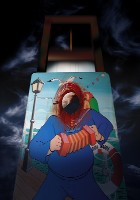 Pre Guillotine
Pre Guillotine Yellow Fever was known as the “American Plague”.
Yellow Fever was known as the “American Plague”. The Black Death in the Middle ages has left behind a few legacies.
The Black Death in the Middle ages has left behind a few legacies. * Mountain gorilla researcher, Dian Fossey, was hacked to death at her research station in 1985. Was her murder committed by poachers, or was she the victim of a more sinister plot? Who could have hated this woman, whose goal in life was to study and preserve the silver-backs, so much that they would have murdered her in such a vicious manner? Will her murder ever be solved?
* Mountain gorilla researcher, Dian Fossey, was hacked to death at her research station in 1985. Was her murder committed by poachers, or was she the victim of a more sinister plot? Who could have hated this woman, whose goal in life was to study and preserve the silver-backs, so much that they would have murdered her in such a vicious manner? Will her murder ever be solved?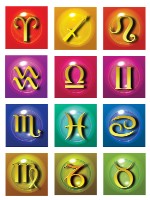 Most of the earliest civilizations practiced some form of star worship in order to understand the natural world or to predict future events. The roots of what we understand as western astrology seem to come from the Sumerians, Babylonians, Chaldeans and Assyrians-in the area of Mesopotamia. From there, the study of astrology spread to India, but most significantly, it was assimilated by the ancient Greeks, becoming the form we recognize today.
Most of the earliest civilizations practiced some form of star worship in order to understand the natural world or to predict future events. The roots of what we understand as western astrology seem to come from the Sumerians, Babylonians, Chaldeans and Assyrians-in the area of Mesopotamia. From there, the study of astrology spread to India, but most significantly, it was assimilated by the ancient Greeks, becoming the form we recognize today. The first evidence of the use of fire (c.600,000 BC) comes from China in the caves of Choukeoutien near Beiing. Fire was used to cook and probably to ward off dangerous animals or lure them into traps.
The first evidence of the use of fire (c.600,000 BC) comes from China in the caves of Choukeoutien near Beiing. Fire was used to cook and probably to ward off dangerous animals or lure them into traps.